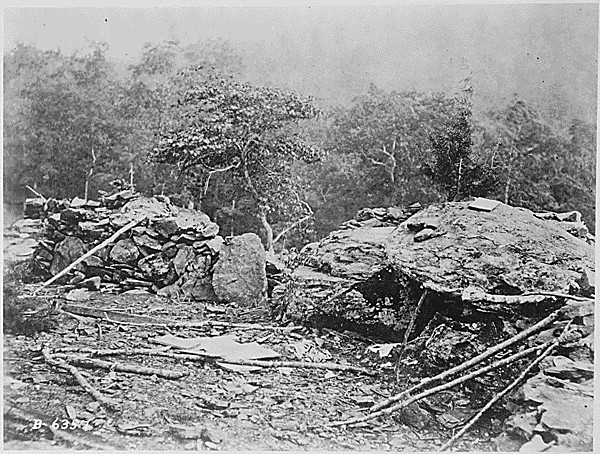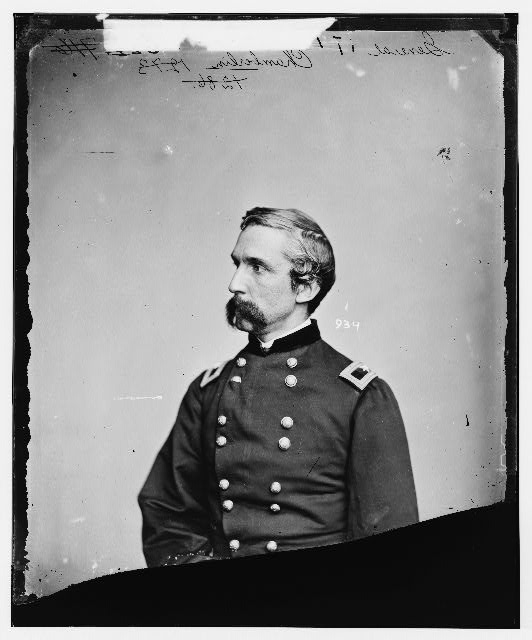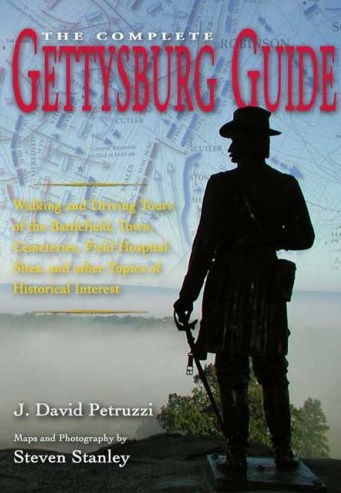Posts Tagged ‘Gettysburg’
New Acquisition – The Complete Gettysburg Guide
I made a number of new acquisitions over the past month. The latest arrived in the mail today and has been added to my virtual bookshelves here. I’m actually pretty excited by this purchase.
![]() .
.
The Complete Gettysburg Guide: Walking and Driving Tours of the Battlefield, Town, Cemeteries, Field Hospital Sites, and other Topics of Historical Interest
Format: Hardcover
Price: $39.95
ISBN: 978-1-932714-63-0
Published: 2009-06-01 by Savas Beatie
Language: English
Binding: Hardcover
Pages: 320
Dimensions: 7 X 10
Petruzzi
J. David Petruzzi (Author) who blogs at Hoofbeats and Cold Steel here.
Stanley
and Steven Stanley (Maps and Photography) 62 photos and 70 full color maps
Gettysburg: The Film, The Books, The Battle

Little Round Top Union Breastworks (Source: The National Archives) Brady
Each July we bring out the film Gettysburg and watch it in a couple of sittings. (My husband can’t wait for the four plus hour epic to come out in Blu-ray.)
I’ll be the first to admit that it’s more than a bit hokey here and there but the scene of the defense of Little Round Top by the 20th Maine Volunteer Infantry Regiment is always a highlight.
My current reading for class discusses the legacy of bayonet charges from the Mexican War and the debate over the frequency of their use during the American Civil War still goes on. Undebatable is the inspired use of a downhill bayonet charge by Col. Joshua Lawrence Chamberlain and its standing on the list of well-known actions at Gettysburg.

Joshua Lawrence Chamberlain
I’ve been enjoying the perspectives of several ACW bloggers on their top ten books on Gettysburg which Brett over a TOCWOC has nicely organized for us here.
Check them out. Very much worth perusing.
“The Rail Splitter and the Railroads”
 RUN don’t walk to your nearest bookstore or library to read the cover story of the February issue of Trains Magazine, “The Rail Splitter and the Railroads,” by Peter A. Hansen. This terrific article, written by one of the country’s preeminent rail historians, is receiving numerous accolades. Highly recommend for those interested in 19th century America and the Civil War era.
RUN don’t walk to your nearest bookstore or library to read the cover story of the February issue of Trains Magazine, “The Rail Splitter and the Railroads,” by Peter A. Hansen. This terrific article, written by one of the country’s preeminent rail historians, is receiving numerous accolades. Highly recommend for those interested in 19th century America and the Civil War era.
For those of you who are regular Wig Wags Blog readers, you’ll recall that Pete contributed to my Civil War Railroads series here. If you’re a CBS Sunday Morning fan, and caught the show yesterday, you may have seen Pete interviewed by Rita Braver as a part of the story titled AMERICANA: Trains as Art. Pete took Sunday Morning to Kansas City’s “triple crossing,” as well as to the renovated, grand old Union Station.
Southern Storm: Sherman’s March to the Sea
Belatedly, I want to mention that I’ve received a pre-publication copy of Noah Andre Trudeau’s Southern Storm: Sherman’s March to the Sea, which I’ll hope to provide a full review of before too long. At first blush, it appears to be an excellent read.
Since this book falls into the category of Civil War Campaigns, I’ve added a shelf in my virtual bookstore to accommodate it which you can find here.
As a student of military history, one of the many things that I find so fascinating about Sherman’s march is that its destructive power encourages its consideration as “total war” a la Clausewitz. Can’t wait to dig in to this one.
For those of you in the Chicago area, Mr. Trudeau’s publisher Harper Collins, indicates that he will be publicizing his book at the following on Thursdays.
05:00 PM – 07:30 PM
PRITZKER MILITARY LIBRARY
2nd FL 610 N Fairbanks Court Chicago, IL 60611


















































